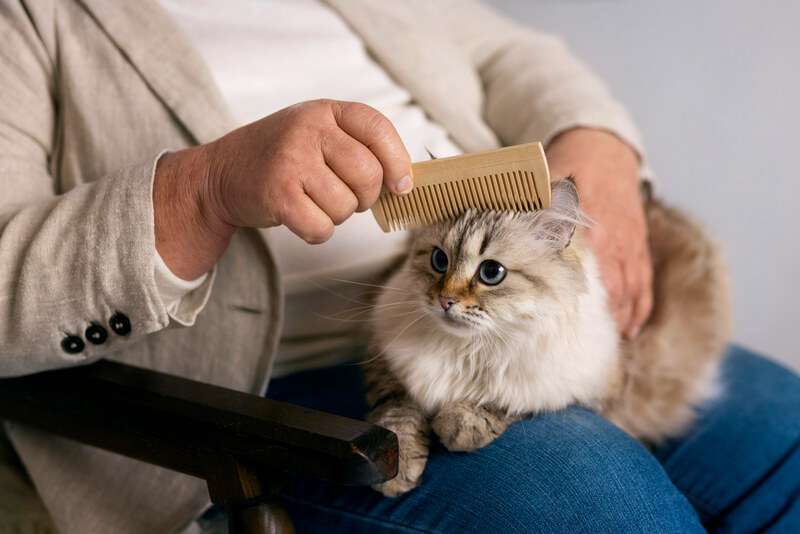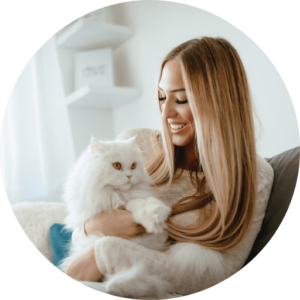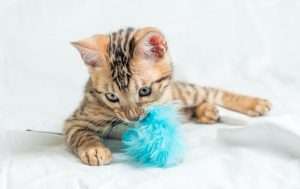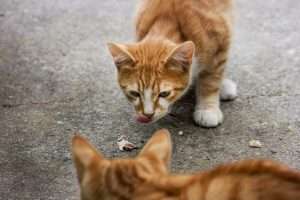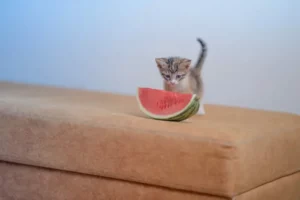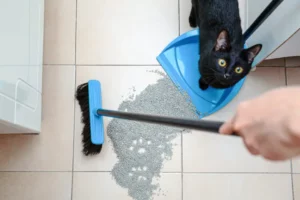Table of Contents
Product Overview
Rank
Image
Product
Details
Price

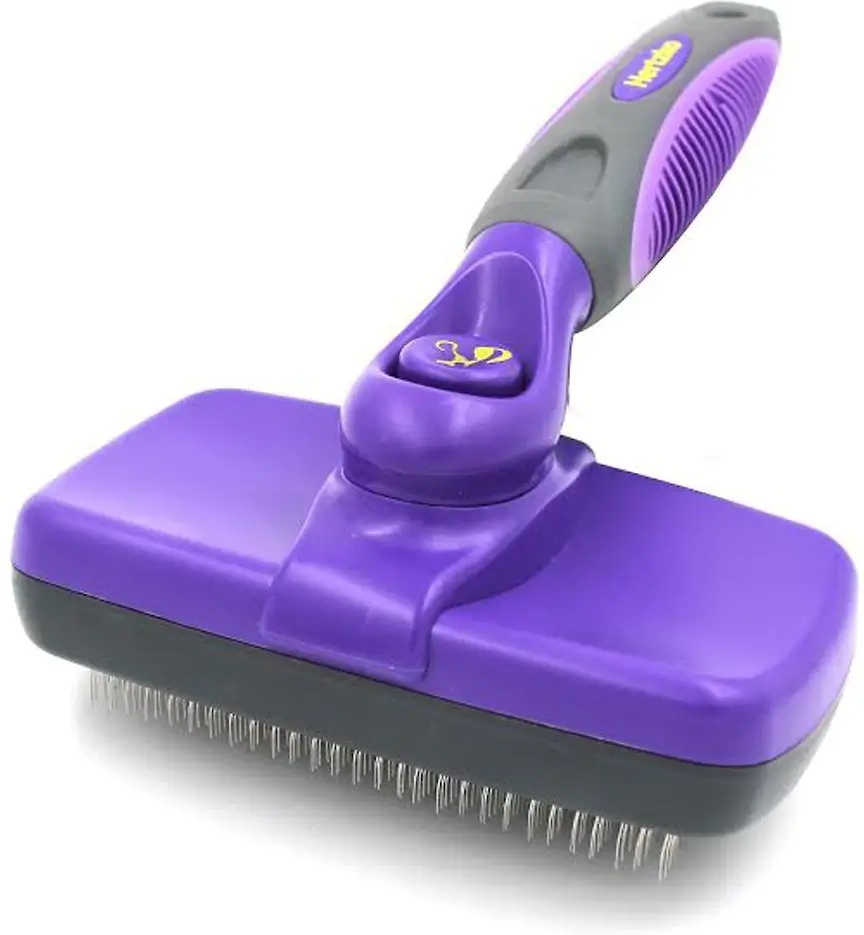
Hertzko Self Cleaning Slicker Brush
- Self-cleaning
- Fine, bent wire bristles
- Comfortable grip handle

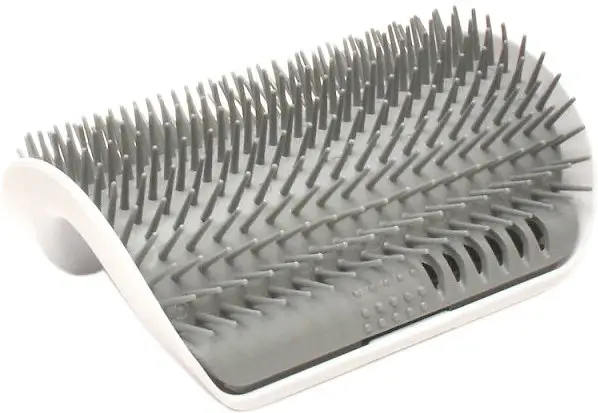
Catit Senses 2.0 Self Groomer Cat Brush
- Soft, flexible bristles
- Easy mounting
- Includes catnip
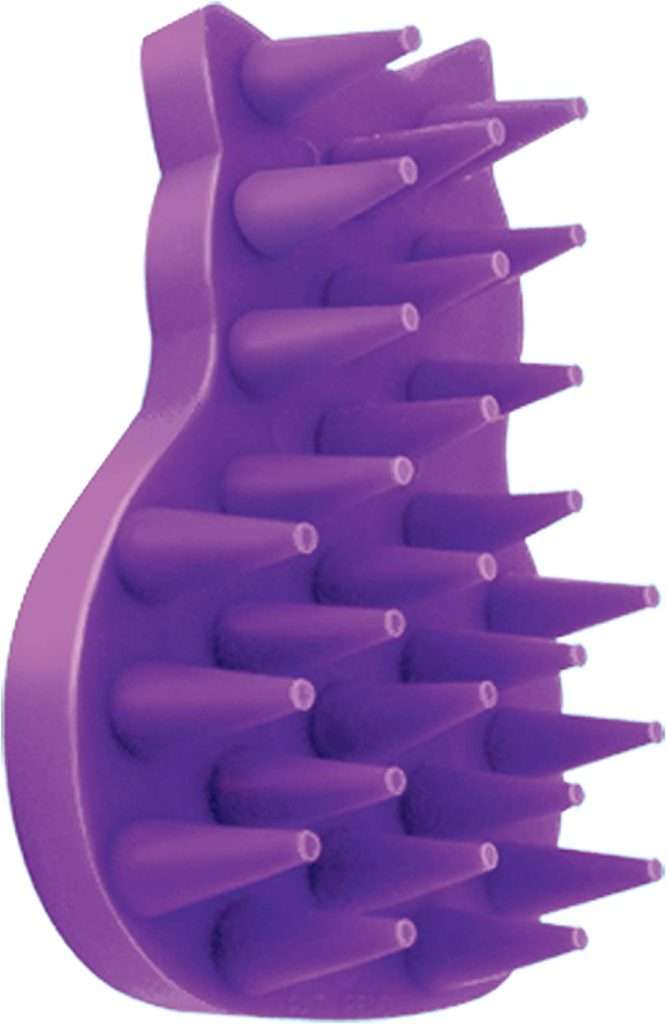
KONG Cat ZoomGroom Multi-Use Brush
- Soft rubber material
- Flexible bristles
- Provides a relaxing massage

Pet Republique Dematting Rake
- Stainless steel teeth
- Ergonomic handle
- Effective at removing tangles, mats
Why Grooming is Essential for Your Cat
Benefits of regular grooming
Regular grooming is vital for maintaining your cat’s health and overall well-being. Some of the key benefits include:
- Reduced shedding: Regular brushing helps to remove loose hair, reducing the amount of hair your cat ingests when grooming themselves. This results in fewer hairballs and a cleaner home.
- Skin and coat health: Brushing distributes the natural oils in your cat’s fur, keeping their coat shiny, healthy, and free of tangles or mats.
- Bonding time: Grooming provides an excellent opportunity for you to bond with your cat, helping to build trust and strengthen your relationship.
- Health monitoring: Regular grooming allows you to keep an eye on your cat’s skin for any issues, such as parasites, injuries, or unusual growths.
- Improved circulation: The massaging action of brushing helps to stimulate blood circulation and can help to reduce stress in your cat.
Identifying common cat coat types
Cats come in various coat types, each requiring specific care. Common cat coat types include:
- Short-haired: These cats have a single layer of fur that lies close to their body. They typically require minimal grooming.
- Medium-haired: These cats have slightly longer fur and may have a denser undercoat. They need regular grooming to prevent matting and tangles.
- Long-haired: Long-haired cats have a thick undercoat and longer fur, making them more prone to mats and tangles. They require frequent grooming to maintain their coat.
Addressing specific grooming needs
Different coat types require different grooming tools and techniques. For example:
- Short-haired cats: A rubber brush, grooming glove, or bristle brush works well for short-haired cats, as they can effectively remove loose hair and stimulate the skin.
- Medium and long-haired cats: A slicker brush or comb is ideal for medium and long-haired cats, as they can help detangle and remove loose hair from the undercoat. Pin brushes can also be helpful for gently working through tangles and mats.
- Cats with sensitive skin: For cats with sensitive skin, choose a gentle brush with soft bristles or a grooming glove to avoid irritation.
By identifying your cat’s coat type and specific grooming needs, you can ensure a healthy, well-groomed appearance.
Types of Cat Brushes
Slicker brushes
Bristle brushes
Pin brushes
Rubber brushes
Grooming gloves
Factors to Consider when Choosing the Best Cat Brush
When selecting the perfect cat brush for your feline companion, several factors should be taken into consideration. Keeping these aspects in mind will help you find the most suitable brush for your cat’s grooming needs.
Cat’s coat type and length : The type and length of your cat’s coat are essential factors to consider when choosing a cat brush. Short-haired cats often benefit from softer bristle brushes or rubber brushes, while medium and long-haired cats typically require slicker brushes or pin brushes to detangle their fur and remove loose hair effectively.
Brush material and design : Different brushes are made from various materials and designs. For example, slicker brushes have fine metal bristles, while bristle brushes feature natural or synthetic bristles. Rubber brushes and grooming gloves are made of flexible rubber or silicone material. Ensure the brush you choose is made of high-quality, durable materials and designed to accommodate your cat’s grooming needs. It is also essential to consider the brush’s bristle stiffness, as some cats may prefer a gentler touch, while others might require a more robust brush to remove tangles and mats.
Size and ease of use : The size of the brush plays a crucial role in providing a comfortable grooming experience for both you and your cat. A brush that is too large or small may be difficult to maneuver and may not effectively groom your cat’s fur. Opt for a brush size that fits comfortably in your hand and matches the size of your cat. In addition, consider choosing a brush with an ergonomic handle or non-slip grip to make the grooming process more comfortable for you.
By considering these factors, you can choose the right cat brush that not only effectively grooms your cat’s fur but also ensures a comfortable and enjoyable experience for both you and your feline friend. Regular grooming sessions will help maintain your cat’s coat health, reduce shedding, and strengthen the bond between you and your cat.
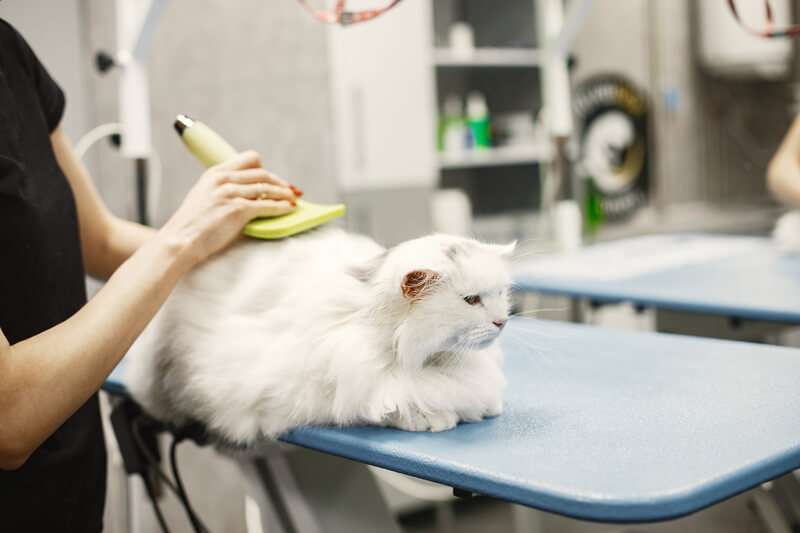
Best Cat Brush on the Market
Hertzko Self Cleaning Slicker Brush

- Pros
- Works on various coat types and lengths
- Easy to clean with just a push of a button
- Durable and well-made
- Cons
- May be too large for smaller cats
- Some cats might find the bristles uncomfortable
Safari Cat Bristle Brush
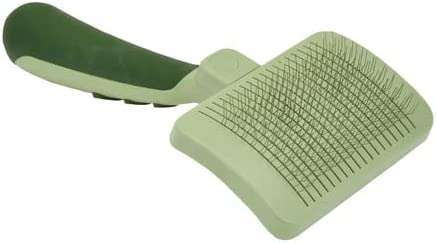
- Pros
- Ideal for short-haired cats
- Comfortable grip
- Stimulates the skin for a shinier coat
- Cons
- Not suitable for cats with longer coats
- May not effectively remove mats and tangles
Catit Senses 2.0 Self Groomer Cat Brush

- Pros
- Allows your cat to groom themselves
- Gently removes loose hair and provides a massage
- Easy to install and maintain
- Cons
- May not work well for cats with very thick or long coats
KONG Cat ZoomGroom Multi-Use Brush
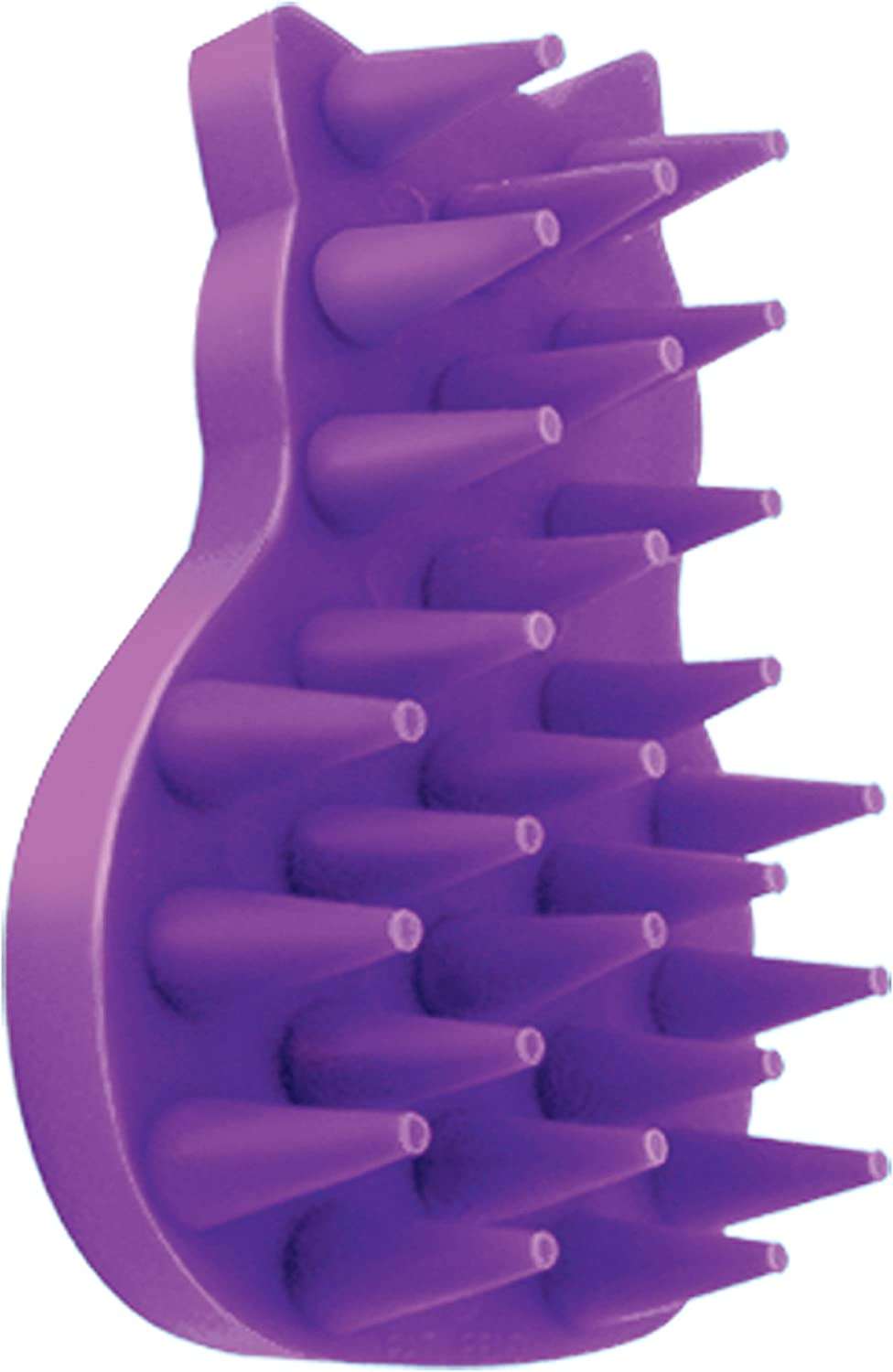
- Pros
- Soft rubber material
- Effectively removes loose hair and stimulates the skin
- Provides a massage-like experience
- Cons
- May not be as effective for detangling or removing mats in long-haired cats
- Might require more effort to clean compared to brushes with metal bristles
Pet Republique Dematting Rake
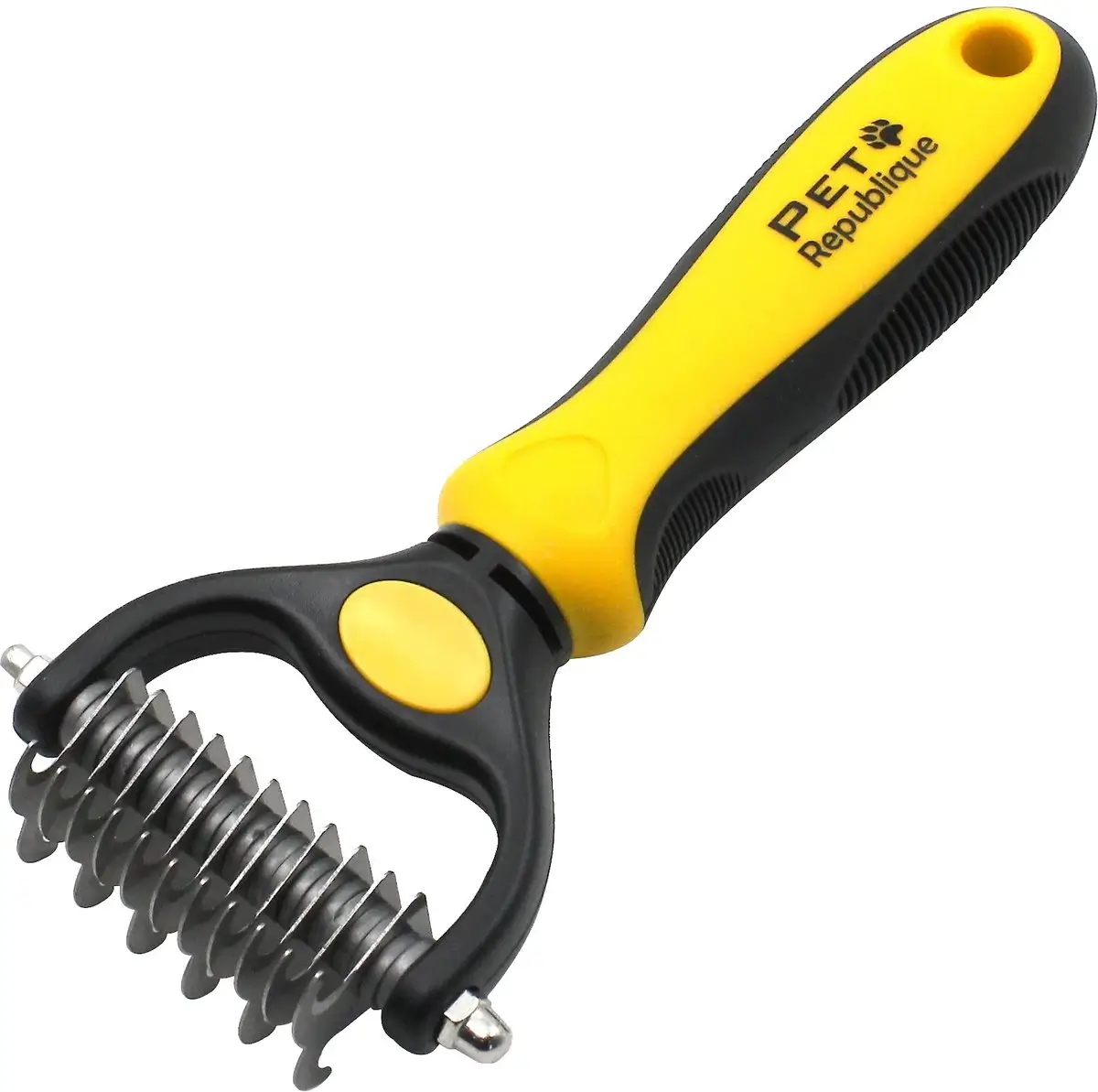
- Pros
- Gentle on your cat's skin and fur
- Efficiently detangles and removes mats
- Ergonomic handle
- Cons
- Might require more effort when used on heavily matted fur
Grooming Tips for a Healthy Cat Coat
How to brush your cat effectively
Brushing your cat effectively is essential to maintaining a healthy coat. To groom your cat properly, follow these steps:
- Start by gently petting your cat to establish a calm and comfortable atmosphere.
- Begin brushing at the head, slowly working your way towards the tail.
- Always brush in the direction of the fur growth.
- Use gentle, even strokes, being mindful of any sensitive or tangled areas.
- For medium to long-haired cats, ensure you reach down to the undercoat, removing any loose hair or tangles.
- Pay particular attention to areas prone to matting, such as behind the ears, under the legs, and around the collar area.
- After brushing, use a comb to remove any remaining loose hair and check for any remaining tangles.
Frequency of grooming
The frequency of grooming sessions depends on your cat’s coat type and individual needs. Short-haired cats generally require brushing once or twice a week, while medium to long-haired cats may need daily brushing to prevent mats and tangles. Regular grooming helps reduce shedding, prevents hairballs, and keeps your cat’s coat looking healthy and shiny.
Handling sensitive or anxious cats
Some cats may be sensitive or anxious about grooming. To make the experience more enjoyable and less stressful for your cat, try the following tips:
- Begin grooming sessions when your cat is relaxed and in a comfortable environment.
- Use a gentle touch and soothing tone of voice.
- Start with short grooming sessions and gradually increase the duration over time.
- Offer treats or praise to create positive associations with grooming.
- If your cat becomes agitated or stressed, stop the grooming session and try again later.
By incorporating these grooming tips and using the right cat brush, you can maintain a healthy, beautiful coat for your feline friend and strengthen the bond between you both.
Frequently Asked Questions
To clean and maintain your cat brush, follow these steps:
- Remove any loose hair from the brush after each grooming session.
- Occasionally, wash the brush with mild soap and warm water to remove dirt, debris, and any residual oils.
- Rinse the brush thoroughly and allow it to air dry before using it again.
- Inspect the brush regularly for any damage or wear and replace it as needed to ensure effective grooming.
The Verdict
Throughout this article, we have explored the various types of cat brushes, including slicker brushes, bristle brushes, pin brushes, rubber brushes, and grooming gloves. Each brush type offers unique benefits and caters to different coat types and grooming needs.
Choosing the right cat brush for your feline friend is crucial for maintaining a healthy coat and enjoyable grooming experience. By considering your cat’s coat type, the brush material and design, and size and ease of use, you can find the ideal brush to meet your cat’s grooming needs. Regular grooming sessions will not only keep your cat looking and feeling their best but also help strengthen the bond between you and your beloved pet.


